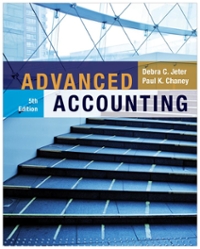P Company owns 80% of S Companys common stock (cost $650,000) and 20% of its preferred stock
Question:
Preferred stock......... $200,000
Common stock......... 500,000
Retained earnings......... 160,000
The preferred stock is $25 par value, 9% cumulative, and nonparticipating. The call price is $27 per share. Dividends have been declared in all years except for 2010.
An examination of S Company€™s assets and liabilities revealed that their book values were equal to fair values except for the inventory and equipment.
-1.png)
The equipment had a remaining life of five years at the date of the equity purchase, and the FIFO cost flow assumption is used in costing inventory. S Company sells inventory to P Company at 25% above cost. During 2010 and 2011, such sales amounted to $350,000 and $390,000, respectively. The 2010 and 2011 ending inventories of P Company included goods purchased from S Company for $77,500 and $54,000, respectively. The companies file consolidated tax returns. Ignore deferred income taxes when assigning the difference between implied and book value. Selected data for the 2011 December 31 fiscal year-end are given below:
-2.png)
Required:
A. Prepare a schedule to compute the book value interest acquired for each equity investment.
B. Prepare a schedule to assign the difference between the implied value of the common stock investment and the book value of S.
C. Compute the following items:
(1) Dividends received during 2011 by P Company from S Company for each equity interest held.
(2) Noncontrolling interest in 2011 consolidated net income.
(3) Controlling interest in consolidated net income for 2011.
(4) Consolidated retained earnings on January 1,2011.
Common stock is an equity component that represents the worth of stock owned by the shareholders of the company. The common stock represents the par value of the shares outstanding at a balance sheet date. Public companies can trade their stocks on...
Step by Step Answer:






